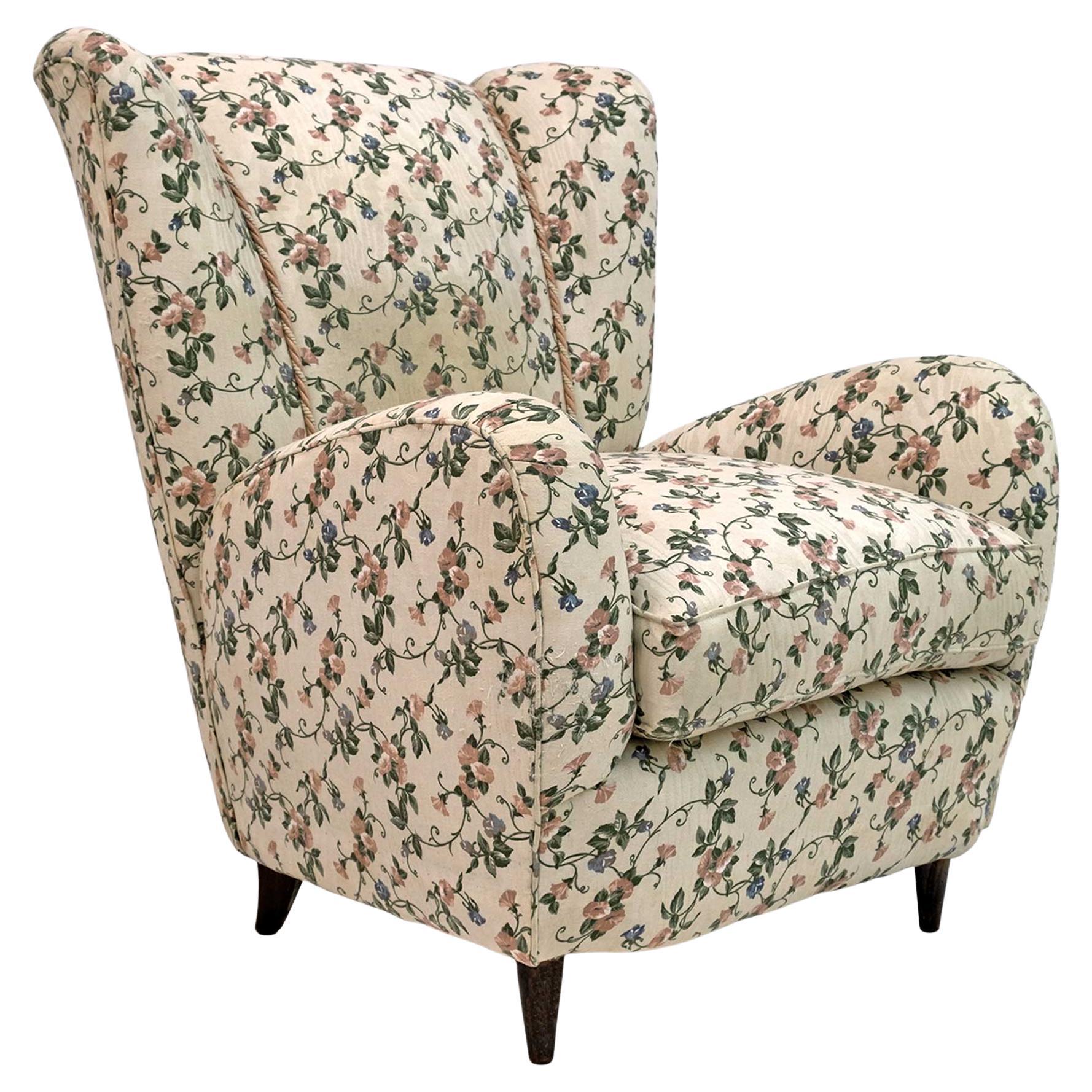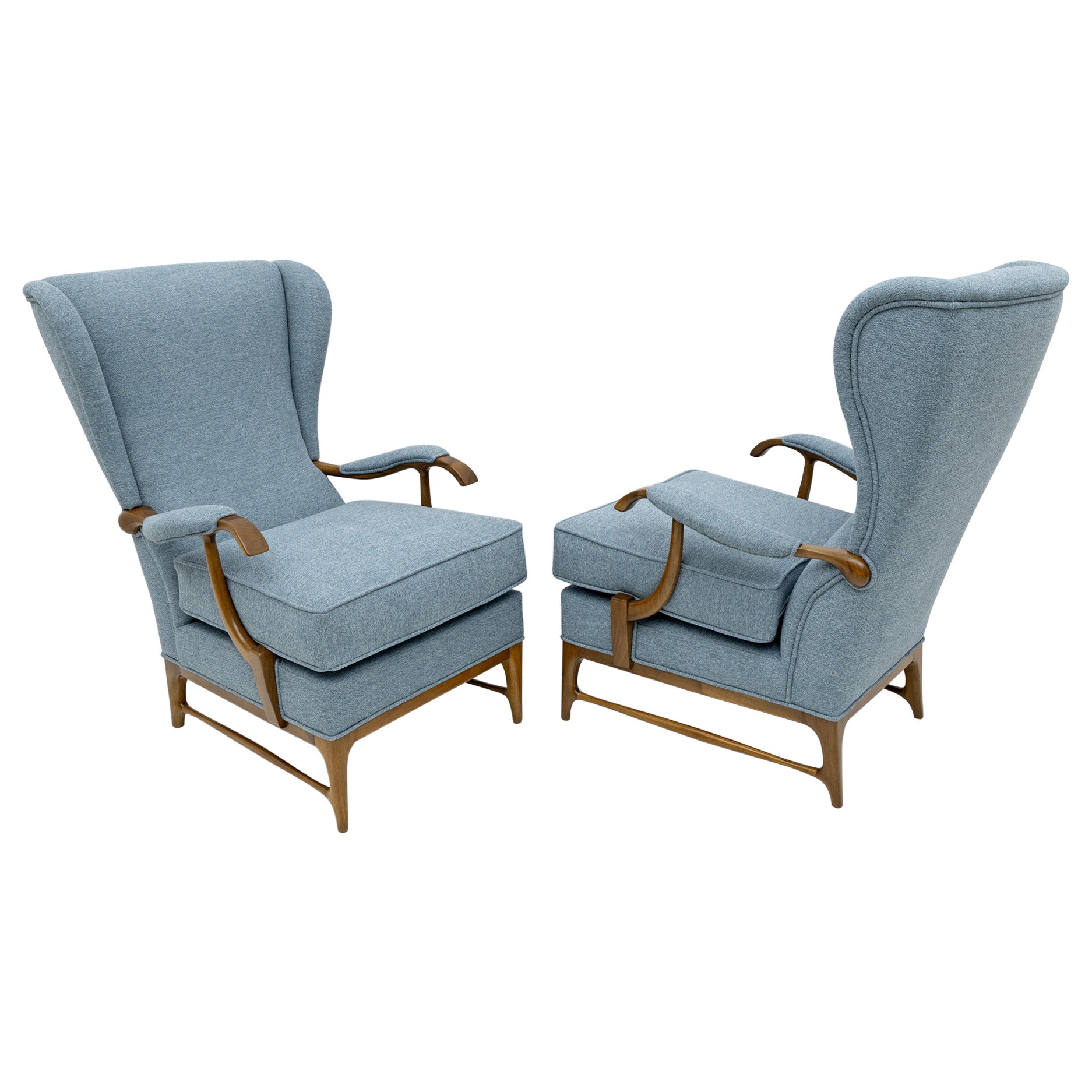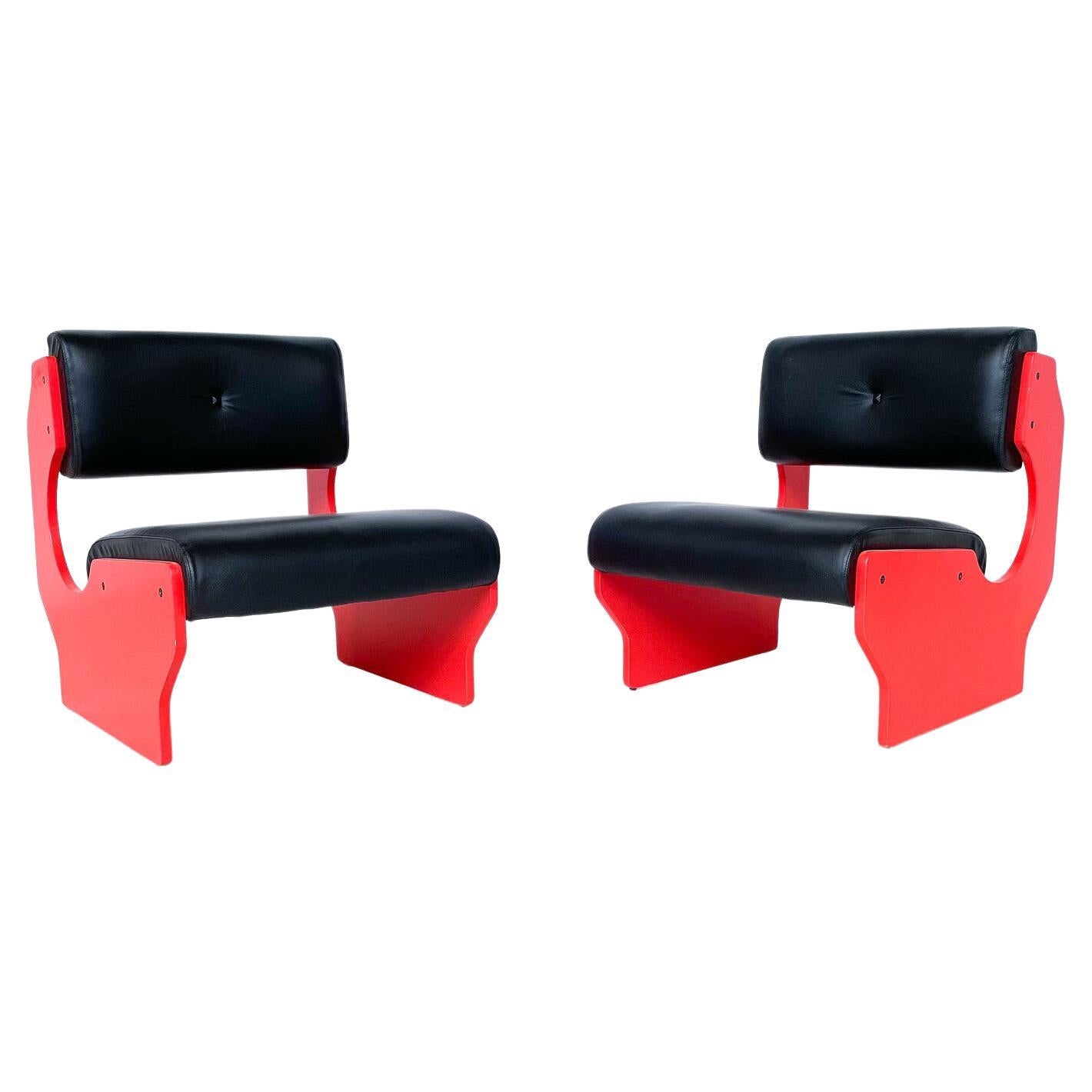Items Similar to Paolo Tilche Pair of Italian Mid-Century Modern Ratan Armchairs Model “Silvia”
Want more images or videos?
Request additional images or videos from the seller
1 of 7
Paolo Tilche Pair of Italian Mid-Century Modern Ratan Armchairs Model “Silvia”
About the Item
Paolo Tilche (1925-2000)
Pair of armchairs model “Silvia”
Manufactured by Arform,
Italy, 1956
Rattan
Pair of Italian 20th century ratan armchairs Model “Silvia”
Measurements
100 cm x 100 cm x 63 cm
39.37 in x 39.37 in x 24.8 in
Literature
Giuliana Gramigna, Repertorio del design italiano per l’arredamento domestico 1950-2000, ed. Umberto Allemandi & C., Torino, 2003, p. 45.
Condition
Perfect condition.
- Creator:Arform (Manufacturer),Paolo Tilche (Designer)
- Dimensions:Height: 24.81 in (63 cm)Width: 39.38 in (100 cm)Depth: 39.38 in (100 cm)
- Style:Modern (Of the Period)
- Materials and Techniques:
- Place of Origin:
- Period:
- Date of Manufacture:1956
- Condition:Wear consistent with age and use.
- Seller Location:Barcelona, ES
- Reference Number:1stDibs: LU2374320501662
About the Seller
5.0
Vetted Seller
These experienced sellers undergo a comprehensive evaluation by our team of in-house experts.
Established in 2015
1stDibs seller since 2016
92 sales on 1stDibs
Typical response time: 5 hours
- ShippingRetrieving quote...Ships From: Casavells , Spain
- Return PolicyA return for this item may be initiated within 2 days of delivery.
More From This SellerView All
- Jose Zanine Caldas Pair of Mid-century modern BrazilianArmchairs Model "H"By José Zanine CaldasLocated in Barcelona, ESJOSE ZANINE DE CALDAS (1919-2001). Pair of armchairs model “H.” Manufactured by Moveis Artísticos Z. Brazil, 1949. Marine plywood, fabric upholstery. Measuremenents 58 cm x 50 cm x 80 H cm. Literature: Habitat, nº9, Sao Paulo 1952. José Zanine Caldas (Belmonte, Bahia, 1918 - Vitória, Espírito Santo, 2001) was an architect and designer. Caldas stands out on the national architecture in Brazil for his exploration of the constructive qualities of Brazilian woods, defining his work with a warm rustic ambience, working on both high-end residential projects and also popular constructions. Never actually training as an architect, he starting working in the 1940s as a designer at Severo & Villares and as a member of the National Artistic Historical Heritage Service (Sphan). He opens a maquet studio in Rio de Janeiro, where he worked between 1941 and 1948, and, at the suggestion of Oswaldo Bratke (1907-1997), moved the studio to São Paulo, from 1949 to 1955. The studio served important modern architects of the two cities, and was responsible for most of the models presented in the book Modern Architecture in Brazil, 1956, by Henrique E. Mindlin (1911-1971).. During the 1940s, he also began developing and researching at the Institute of Technological Research of the University of São Paulo (IPT/USP), and was first introduced to plywood. In 1949, he founded the Fábrica Móveis Artísticos Z, with the objective of producing large-scale industrialized furniture, good quaility and afforable, the furniture was to be materialized using plywood sheets. This method minimized material waste and the need for artisan skills, as the parts were mechanically produced and the use of labor was only needed for the assembling of the furniture. His time at Móveis Artísticos Z, in 1953 was rather short lived and left the company in 1953 and instead worked on landscape projects until 1958 in São Paulo, when he moved to Brasília, where he built his first house, also in 1958, and coordinated the construction of others until 1964. Appointed by Rocha Miranda to Darcy Ribeiro (1922-1997), he joined the University of Brasília (UnB) in 1962 and taught modeling classes until 1964, when he lost his position due to the military coup. He set off and travelled through Latin America and Africa, an experience that had a remarkable effect on his work. On return to Brazil he built his second house, the first of a series of projects in the Joatinga region of Rio de Janeiro. In 1968, he moved to Nova Viçosa, Bahia, and opened a workshop, which ran up until 1980. His experience in the Bahian city was shaped by his renewed love and contact with nature, and he began working closely with environmentalists. In one of these collaborations, he participated in the project of an environmental reserve with the artist Frans Krajcberg (1921-2017) for whom he also designed a studio in 1971. The furniture he designed during this period, is reflective of his ecological sensitivity, his works were constructed with crude logs of wood, whose twisted lines inspire his drawings. It is also in Nova Viçosa that the architect builds the Casa dos Triângulos (1970) and casa da Beira do Rio (1970), in which he adopted a very artisanal construction system with typical woods of the region. According to the historian and architecture critic Roberto Conduru, Caldas' performance was relevant for the diffusion of environmental values in architectural projects: a "taste for the alternative and the rustic was disseminated throughout the Brazilian territory [...], encouraged by environmental preservation campaigns, by the wear and tear of the current models in reinforced concrete and by the re-emergence of the regionalist ideal in the international panorama"1. Between 1970 and 1978, he kept an office in Rio de Janeiro, where he returned in 1982. In 1975, the filmmaker Antonio Carlos da Fontoura made the film Arquitetura de Morar, about the houses of Joatinga, with a soundtrack by Tom Jobim (1927-1993), for whom Caldas designed a house. Two years later, the architect's work was exhibited at the Museum of Modern Art of Rio de Janeiro (MAM/RJ), at the São Paulo Museum of Art Assis Chateaubriand (Masp) in Belo Horizonte, and the following year at Solar do Unhão, in Salvador. Between 1980 and 1982 The Helium House Olga Jr was designed and built in São Paulo. Caldas outlined the plans for the construction sourcing the all the wood, the actual assembly of the house was carried out by the owner. The house, is defined by wooden structure that stands out from the fence walls, the clay tile roof of wide eaves and the demolition materials that give the building the feeling of rusticity, warmth and nostalgia. The house was similar to those built in the 1970s for Eurico Ficher and Pedro Valente, in Joatinga. In 1983, Calders founded the Center for the Development of Applications of The Woods of Brazil (DAM), and gave it to UnB in 1985. During this period, he proposed the creation of the Escola do Fazer, a teaching center focused on the use of wood for the construction of houses, furniture and utilitarian objects for the low-income population. Despite the fact that much of Calders early work was centered around building houses for the elite, in the 1980s the designer dedicates himself the DAM where he rigorously researches popular housing based on artisan construction processes and whereby the users participate in the construction process. At the Brasília unit, he developed prototypes of popular houses with eucalyptus logs as a structure and sealing in soil-cement, betting on an ideal of self-construction already tested at Casa do Nilo, in São Gonçalo, Rio de Janeiro. From that moment on, as occurred with his the furniture designs, Caldas adopts the use of crude wood logs rolled...Category
Mid-20th Century Brazilian Mid-Century Modern Armchairs
MaterialsPlywood, Velvet
- Gio Ponti Pair of Armchairs, Model "803" Manufactured by Cassina Italy, 1955By Gio PontiLocated in Barcelona, ESGio Ponti Pair of armchairs, model «803» Manufactured by Cassina Italy, 1955 Walnut, fabric. From the archives of Side Gallery, Barcelona Measurements 80 cm x 75 cm x 81.5 H...Category
Vintage 1950s Italian Armchairs
MaterialsFabric, Walnut
- Pair of Pale Pink Italian Armchairs Part of Set Model “P-35” by Osvaldo BorsaniBy Osvaldo BorsaniLocated in Barcelona, ESOsvaldo Borsani, (1911-1985) Pair of armchairs part of set model “P-35” Manufactured by Arredamenti Borsani, Varedo Italy, 1951 Walnut with fabric upholstery A pair of pale pi...Category
Vintage 1950s Italian Mid-Century Modern Armchairs
MaterialsFabric, Walnut
- Joaquim Tenreiro Pair of Armchairs Model “Leve”, Brasil, 1942By Joaquim TenreiroLocated in Barcelona, ESJoaquim Tenreiro Pair of armchairs model “Leve” Manufactured by Langenbach & Tenreiro Ltda Brasil, 1942 Jacaranda, upholstery From the archives of Side Gallery, Barcelona M...Category
Vintage 1940s Brazilian Armchairs
MaterialsFabric, Jacaranda
- Joaquim Tenreiro Pair of Armchairs Model “Concha” Brasil, 1950By Joaquim TenreiroLocated in Barcelona, ESJoaquim Tenreiro Pair of armchairs model “Concha” Manufactured by Tenreiro Moveis e Decoraçaos Brasil, 1950 Pau marfim wood, upholstery From the archives of Side Gallery, Barce...Category
Vintage 1950s Brazilian Armchairs
MaterialsFabric, Wood
- Joaquim Tenreiro Pair of Armchairs Model “Leve”, Brasil, 1942By Joaquim TenreiroLocated in Barcelona, ESJoaquim Tenreiro Pair of armchairs model “Leve” Manufactured by Langenbach & Tenreiro Ltda Brasil, 1942 Jacaranda, upholstery From the archives of Side Gallery, Barcelona M...Category
Vintage 1940s Brazilian Armchairs
MaterialsFabric, Jacaranda
You May Also Like
- "Rea" Minimal Leather Chair by Paolo Tilche for Arform, Italy, 1950sBy Paolo Tilche, ArformLocated in Milan, ITRare "Rea" chair by Paolo Tilche for Arform. Squared metal frame and hair-on leather cover.Category
Vintage 1950s Italian Chairs
MaterialsMetal
- Pair of Paolo Buffa Mid-Century Modern Italian Armchairs, 1950sBy Paolo BuffaLocated in Puglia, PugliaBeautiful pair of armchairs with curved armrests, made by Paolo Buffa in 1950. The structure in curved and padded wood, the upholstery was redone more than twenty years ago but is in...Category
Vintage 1950s Italian Mid-Century Modern Armchairs
MaterialsFabric, Beech
- Set of Six Minimal "Rea" Leather Chairs by Paolo Tilche for Arform, Italy, 1950sBy Paolo Tilche, ArformLocated in Milan, ITSet of six "Rea" chairs by Paolo Tilche for Arform. Squared black metal frame and thick cognac leather. Also available another chair with hair-on leather cover.Category
Vintage 1950s Italian Chairs
MaterialsMetal
- Paolo Buffa Mid-Century Modern Italian Armchair, 1950sBy Paolo BuffaLocated in Puglia, PugliaBeautiful armchair with curved armrests, made by Paolo Buffa in 1950. The structure in curved and padded wood, the upholstery was redone more than twenty years ago but it is in very ...Category
Vintage 1950s Italian Mid-Century Modern Armchairs
MaterialsFabric, Beech
- Pair of Paolo Buffa Mid-Century Modern Italian Bouclè Armchairs by Framar, 1950sBy Paolo Buffa, FramarLocated in Puglia, PugliaPair of Wingback armchairs designed by Paolo Buffa and produced by Framar in the 1950s. The armchairs have been restored and upholstered with sugar paper-colored bouclé fabric. Paolo...Category
Vintage 1950s Italian Mid-Century Modern Armchairs
MaterialsBouclé, Walnut
- Attributed of Paolo Buffa Mid-Century Modern Italian Velvet Armchairs, 1950sBy Paolo BuffaLocated in Puglia, PugliaRare pair of wingback armchairs attributed to Paolo Buffa and produced in the 1950s. The armchairs have been restored and upholstered with ivory velvet. Paolo Buffa was an Italia...Category
Vintage 1950s Italian Mid-Century Modern Armchairs
MaterialsVelvet, Walnut
Recently Viewed
View AllMore Ways To Browse
Rattan Pair
Mid 20th Century Italian Armchair
Rattan Armchair Pair
Rattan Armchairs Pair
Rattan Pair Of Armchairs
Pair Of Rattan Armchairs
Repertorio Del Design Italiano
Pair Of Vintage Rattan Armchairs
Italian Rattan Armchairs
Armchairs 1925
20th C Italian Seating
Umberto Allemandi
Ratan Furniture Used
Used Ratan Furniture
Model Silvia
Italian Modern Ratan
Armchair Ratan
Pair Cane Chairs





